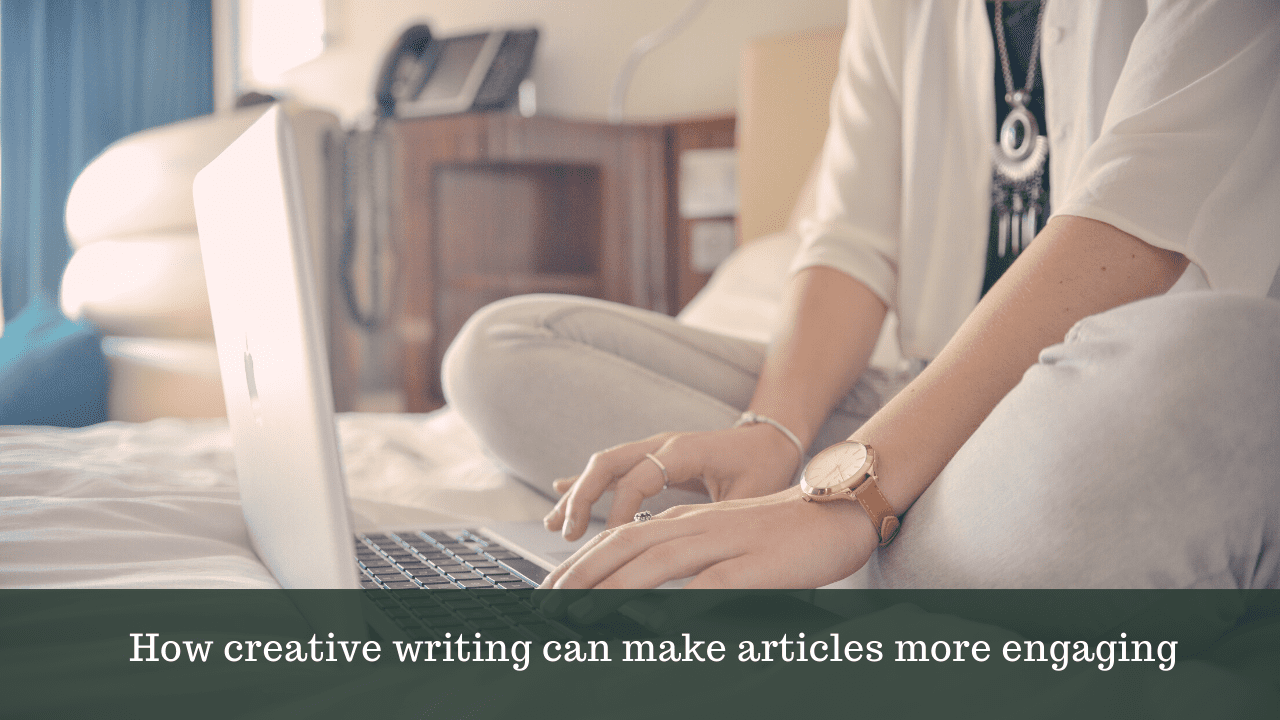Daily news articles from online channels assail the collective consciousness of readers like unrelenting armies in battle. Each and every piece of information, similar to the rhythmic marching of soldiers, pounds relentlessly into their heads, demanding attention.
In this digital, fact-saturated world, how can one make their article stand out? What captures the attention of readers, swerving the war for engagement towards your company’s favour?
Creative writing is the answer to these woes. For years, the literary world has captivated humanity with engaging works by using literary devices. So, I believe that writing articles is a similar endeavour. It is true that articles serve the primary purpose of informing readers rather than presenting narratives. However, including similes, metaphors and allusions can sometimes add value to your readers’ experience. This helps you to emerge victorious from the massacre of mediocrity that plagues modern article-writing.
Here are some literary devices that you can incorporate in your next work.
Imagery

Who does not love vivid descriptions that excite the senses? Highlighting the landscape smells and sounds of a place can create an immersive experience for readers. This is especially useful for travel articles where destinations are the key focus. Inspiring a sense of awe can convince readers to visit the place, fulfilling the article’s purpose.
Here’s an example of how I started writing a travel guide for a Bali trip:
John Milton was wrong when he said that paradise was lost; it has been found. Right here, on the island of Bali where cascading waterfalls glisten in the morning sun like endless streams of clear liquid glass. Lush vegetation thrives in the natural landscape, harkening back to biblical days of yore. Set against warm pastel colours that paint the horizon during sunset, it is no wonder that Bali has been declared the last paradise on earth.
This technique is not only limited to travel articles, of course. Imagery can be helpful for different types of articles. For example, writers can use auditory imagery in music reviews and visual imagery of empty streets in light of a global pandemic. Gustatory and olfactory imagery (relating to the sense of taste and smell respectively) is great for food-related articles. It may even aid in capturing the zeitgeist of a particular era in a historical article. The possibilities are endless!
Wordplay and allusions
An innovative turn of phrase can be the highlight of an otherwise mundane article spewing facts and figures. Wordplay, including puns and double entendres, entwines seamlessly with article content to stir readers’ interest.

In particular, many writers from The Economist and 1843 are masters of this craft. Their innovative headlines immediately grab our attention. Some examples include ‘Soft Power’– a piece about down feathers and ‘My Chemical Romance— for an article about insect pheromones!
These two headlines are puns. These are expressions that carry multiple meanings. In the former, the widely-known meaning of Soft Power is a political term that refers to a persuasive approach to international relations. Here, it is manipulated and applied to another context. Soft Power now points to the influence and success of down feathers as a product of insulation. Similarly, the latter instance cleverly exploits people’s knowledge of the popular rock band My Chemical Romance. This unique wordplay demonstrates a writer’s wit and helps articles gain recognition.
Allusions, or expressions designed to call something to mind without mentioning it explicitly, also serve similar purposes. In my Bali travel guide, I used the headline ‘Paradise Found’. This alludes to John Milton’s famous epic poem Paradise Lost. It also turns the reference around to emphasise my point that there is paradise on earth, contrary to Milton’s belief. Such a title is meant to generate an anticipatory attitude towards visiting Bali.
Here’s the difference between Evergreen content and topical content.
Metaphors and similes
Using metaphors is another way to spruce up your writing. Metaphors are things regarded as representative or symbolic of something else. In fact, my introduction to this very article is an extended metaphor of war! Language related to fighting points introduces the media landscape as a metaphorical battleground where news sites compete for readers’ attention. This underscores the need to stand out through creative writing.
In this case, the extended metaphor is also constructed out of similes. This can be seen in the phrase ‘like unrelenting armies in battle’.
Metaphors can be used in subheadings as well. For example, a profile piece on veteran Singaporean journalist P.N. Balji had the subheading ‘Newsroom chameleon’. This is a great metaphor that perfectly encapsulates Balji’s versatility. He took on different roles for various media companies during his ever-changing career.
Alliteration
Phonological playfulness can be a wonderful addition to your work. Alliteration is a literary device in which a series of words begin with the same consonant sound. It is sometimes used in headlines to capture readers’ attention. A tabloid article may declare, ‘Pasties, Petrol and the Politics of Panic’, immediately bursting forth with a sense of chaos which tells us what to expect whilst reading. Alternatively, alliteration can be more subtle as seen in The Wall Street Journal’s headline, ‘Jared Kushner Discloses Dozens More Assets in Revised Financial Filing’.
Alliteration is used only on the selected words and helps to place particular emphasis on them. This differs from the former example where every word demands our attention. Hence, alliteration does not always have to be loud and showy. It can be used for different types of news, including business.

The craft of writing offers endless opportunities. There are a variety of ways to make your articles more interesting. This list is non-exhaustive as there are many more literary and rhetorical devices that exist. With a bit of creativity and imagination, your articles can easily stand out amongst the crowd.
Of course, I must add a note of caution– creative writing is just a supplementary factor. It does not serve as a substitute for clear prose, credible quotes, sincerity, accurate facts and good visuals. These are the fundamental aspects of a high-quality article.
That being said, I believe that it is imperative to constantly think of ways to create engaging content for readers. The media landscape is cluttered with articles that are repetitive and bland, so having a unique voice will definitely be an advantage. Above all, writing articles is about presenting stories with refreshing angles, and creative writing can help you to achieve that.
If you’re curious to learn more about, creative writing, content marketing and public relations or want to speak to a SYNC consultant about starting your brand’s PR journey, contact us at [email protected]

